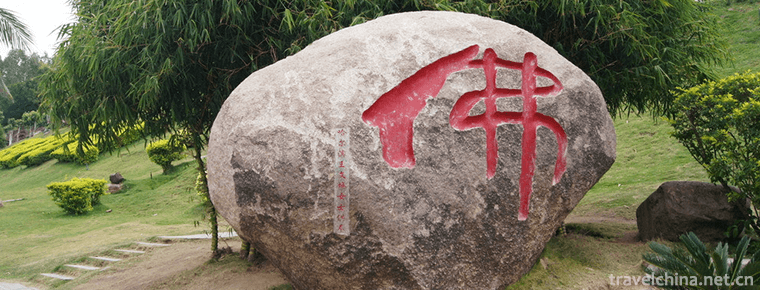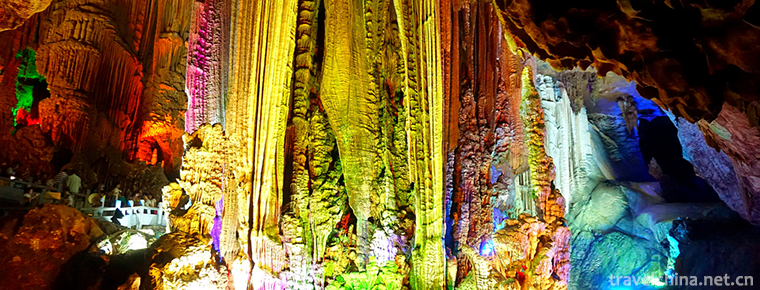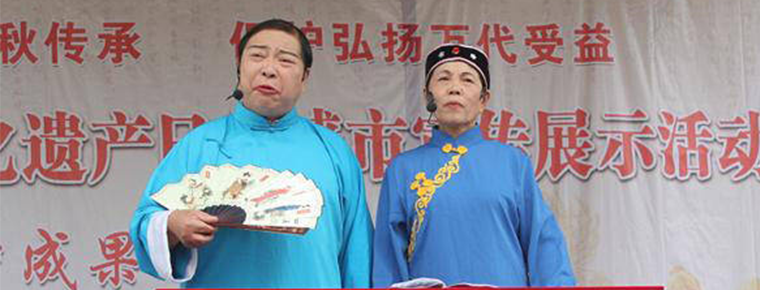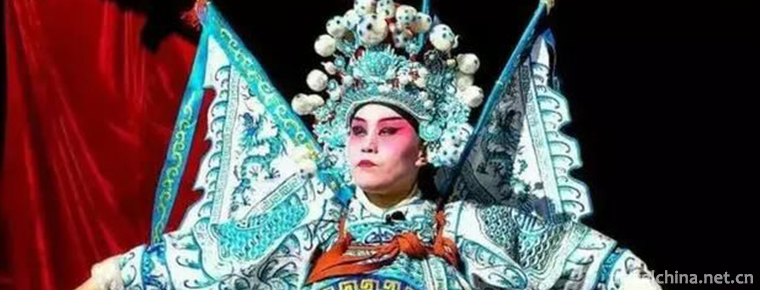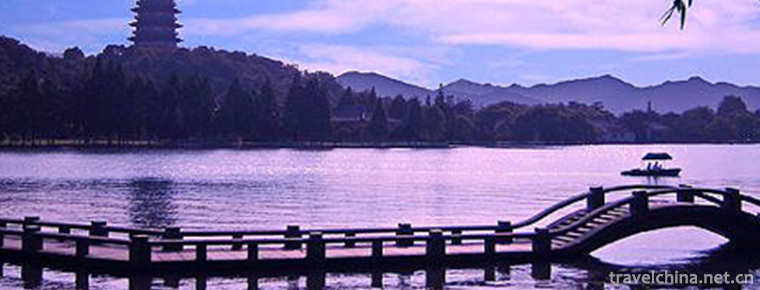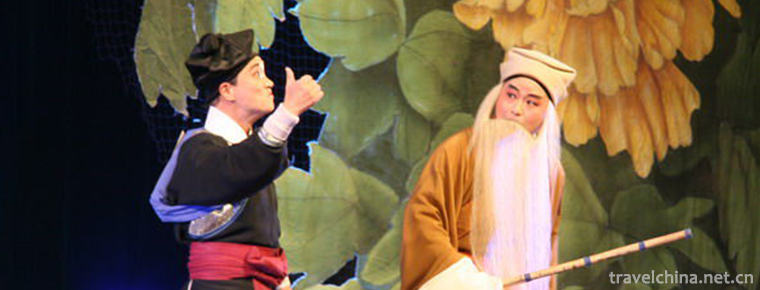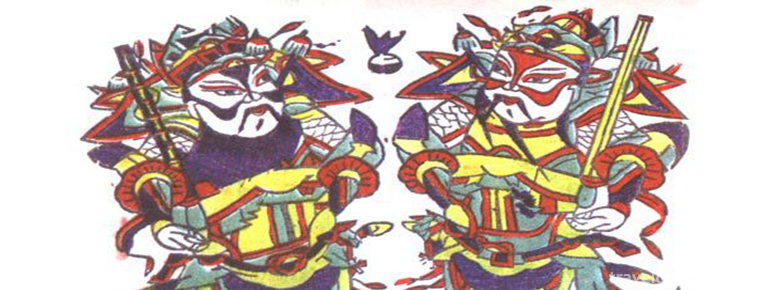Laoshan Scenic SpotQingdao Shandong Province
Laoshan Scenic Area of Qingdao, located in Qingdao City, Shandong Province, is one of the first national key scenic spots approved and announced by the State Council, an important coastal mountain scenic spot in China, and a national AAAAA-level tourist attraction.
Laoshan Scenic Area consists of 9 scenic spots such as Jufeng, Liuqing, Taiqing, Chessboard Stone, Yangkou, Beijiushui and Hualou, and 5 scenic restored areas such as Shazikou, Wang Gezhuang, Beizhai, Xiazhuang and Xifu Town, as well as the outer land and Sea Scenic spots.
Laoshan Mountain is the main mountain range in Shandong Peninsula. Its highest peak is 1133 meters above sea level. It is the first peak of China's coastline and is known as the "first mountain" in the sea. It stands on the shore of the Yellow Sea, tall and magnificent. There is an old saying in the area: "Although the clouds in Mount Tai are high, they are not as good as Lao in the East China Sea." Mountains and seas are famous Taoist mountains. Mountains and seas are connected, and the scenery of Laoshan is the characteristic of the scenery.
Of all the famous mountains in the country, only Laoshan rose at sea level. The coastline around Laoshan is 87 kilometers long and there are 18 islands in the coast, which constitute the sea wonder of Laoshan. Laoshan is a famous Taoist mountain in China. The largest and oldest preserved palace of the Qing Dynasty is the Taitai Palace.
geographical position
Laoshan is located in the southern part of Shandong Peninsula on the Yellow Sea, more than 40 kilometers away from the center of Qingdao. Located at 36 05 ~36 19, 120 24 ~120 42. The southeast side of the mountain area is bordered by the sea, while the west side is bordered by Shinan District, Shibei District, Sifang District, Licang District and Chengyang District of Qingdao City from south to north, and the north side is adjacent to Jimo City .
topographic features
The Laoshan Mountains were formed during the Yanshan orogenic movement. They were connected by mountains and seas. The sea and sky were uniform and magnificent. The trend of the mountain body is Laoding as the center, radiating to the northeast, east, southeast, south, West and other five-way branches. The East and South are steep, and the northwest fluctuates continuously. In the mountain-sea junction, headlands, reefs and beaches are interlaced. Granite landscapes have unique features. The mountains are characterized by vertical joints, obvious spherical weathering, towering peaks, overlapping peaks, deep rivers and valleys, thousands of walls, pictographs and various shapes, and mountain-sea junctions, capes, reefs, beaches and bays are interlaced to form a magnificent mountain and sea spectacle.
Climate type
Laoshan Scenic Spot is a temperate marine climate with an average annual temperature of 12.6 degrees C. Due to the influence of the ocean, the temperature in summer is lower than that in inland areas, with an average temperature of 24 C. The precipitation is 940-1073.7mm, which is the wettest area in Qingdao.
Laoshan was designated as one of the national scenic spots by the State Council in 1982.
Laoshan Mountain was approved as National Forest Park by the Ministry of Forestry in 1992.
Laoshan National Forest Park Management Office was established in 1993. Laoshan Forest Farm timely adjusts its management direction, from building shelter forests to landscape forests.
In 2001, Laoshan was rated as a national AAAAA tourist attraction.
In 2013, Laoshan Scenic Area created a better tourism environment for tourists: improved water, electricity, transportation, communications and other infrastructure, widened and renovated three main tourist highways, and built a new parking lot and several kilometers of climbing trails. At the same time, Laoshan Resort has been built. It consists of Yangkou International Tourism Resort, Liuqinghe Tourism Resort and Beijiushui Tourism Resort.
Scenic spot culture
taoist culture
Laoshan is one of the birthplaces of Taoism. Since the Spring and Autumn Period, Laoshan has gathered a group of alchemists who have been engaged in health and self-cultivation for a long time. The Ming Dynasty chronicle once contained "Wu Wang-fu tasted the Delingbao Man Jing of DengLaoshan". By the late Warring States period, Laoshan had become a famous "East China Sea Immortal Mountain" in China. During the Eastern Tour to teach Qinshihuang, Emperor Wudi of Han Dynasty was lucky twice (Chengyang District of Qingdao City today), which was closely related to the activities of Fang Xiandao. In the Han Shu, Emperor Wudi "did not have Taiyi Xiandong 9 when the ancestral temple gods were in Jiao Men Palace" in Laoshan.
As early as five or six thousand years ago, Laoshan produced a splendid Longshan culture. It was also the main place for Taoism to spread. It began in the Han and Tang dynasties. The Song and Yuan dynasties reached its peak. The Ming and Qing dynasties never declined. At its peak, there was the saying of "Nine Palaces, Eight Views and Seventy-two Ancients". Laoshan Taoism was the Quanzhen sect in the north and was called "the second jungle under the whole world of Taoism". The famous Taoist monks Qiu Chuji, Zhang Sanfeng, Xu Fuyang, Liu Zhijian and Liu Ruozhuang all built corridors in Laoshan. At the same time, Buddhism has a history of spreading with Taoism. The famous ancient temples of Buddhist temples include Haiyin temple, Chaohai temple, Huayan temple and so on. Faxian, Yinshan, Cizhan, Goodwill and other eminent monks have promoted Buddhist Dharma in Laoshan. In the first year of Emperor Wu of the Western Han Dynasty (140 years ago), Zhang Lianfu laid the foundation of Laoshan Taoism by offering sacrifices to three officials and apprentices. From the Western Han Dynasty to the end of the Five Dynasties, Laoshan Taoism basically belonged to Taiping Taoism and the Tianshi Taoism after the reform of Kou Qian in the Northern and Southern Dynasties. It was divided into Lou Guan Sect, Lingbao Sect and Shang Qing Sect (also known as Maoshan Sect and Gezao Sect).
In the early Song Dynasty, Laoshan Taoist priest Liu Ruozhuo was awarded the title of "Huagai Zhenren" by the Taizu of Song Dynasty, while all Taoist temples in Laoshan belonged to the newly created "Huagai School".
Since the Jin and Yuan Dynasties, the Quanzhen School of Taoism has risen, and Laoshan temples have converted to the various factions of the "North Seven Truths". After Genghis Khan closed the hill, Laoshan Taoism flourished.
In the Ming Dynasty, the "Longmen Sect" of Laoshan Taoism was derived from three sects, bringing the total number of sects to 10, and Taoism flourished in Laoshan and its surrounding areas. By the mid-Qing Dynasty, there were nearly 100 Taoist temples, and there was a saying of "Nine Palaces, Eight Views and Seventy-two Ancients" to the outside world.
After the founding of the PRC, the Qingdao Municipal People's Government allocated special funds in 1952 to carry out the key maintenance of Laoshan Taoist temples, and Laoshan Taoism was protected and survived.
In the early period of the "Cultural Revolution", Laoshan Taoism as the "Four Old Ages" was impacted, the gods were destroyed, the Taoists were demobilized, and the religious activities of Laoshan Taoism were abolished.
After the Third Plenary Session of the Eleventh Central Committee of the Communist Party of China, the Qingdao Municipal People's Government gradually and systematically restored some Taoist temples in Laoshan, implemented religious policies, recalled Taoists, restored gods and returned temple property. Now Laoshan has successively restored and opened the temples of Taiqing Palace, Shangqing Palace, Mingxia Cave and Taiping Palace. Laoshan Taoism resumed its normal religious activities .
Buddhist culture
Buddhism has been introduced into Laoshan area for more than 1700 years. Laoshan Buddhism began in the Wei and Jin Dynasties and flourished in the Sui and Tang Dynasties. It reached a climax in the Ming Dynasty and declined in the late Qing Dynasty. The Chongfo Temple in Laoshan (commonly known as Jinggou Temple) was built in the fifth year of Jingyuan (264 A.D.) of Emperor Wei and Yuan Dynasty. It is the oldest monastery in Laoshan and should be regarded as the beginning of Buddhism in Laoshan. In the eighth year of Yixi in the Eastern Jin Dynasty (412 A.D.), Buddhist monk Faxian returned to India and other places to search for Buddhist sutras. When he encountered a hurricane, he drifted to the South Bank of Laoshan Mountain in Buqi County and landed near Kawabata Island. At that time, the county was the prefecture of Changguang County. Li Ying, a Buddhist monk, heard that Faxian was a famous Buddhist monk who took Buddhist sutras from the West, then took Faxian into his city. According to the Confucian classics, the Shifo Temple (Chaohai Court) was established at the place where it landed. Since then, Buddhism has gained a great reputation in Laoshan and spread widely. Later, Shizhu Temple (later renamed Huijuyuan) and Shilian Temple (commonly known as Chengyang Temple) were built successively in Laoshan. The establishment of Fahai Temple in the Northern Wei Dynasty marked the beginning of Laoshan Buddhism.
Related books
Visitors to Laoshan Mountain will not forget the legendary Xiguanyue Temple of the Sanqing Palace where Pu Songling lived. Pu Songling wrote Strange Tales from a Liaozhai Studio, many times with Laoshan as the background. A camellia tree in front of Sanguandian Hall is 8.5 meters high and 1.78 meters dry. Its age is about 700 years. It is a rare Camellia in the world. In the cold winter season, the trees are green, the leaves are green and the safflower is beautiful, just like a layer of snow. The original white peony in the palace is high and eaves. Pu Songling lived here at that time, in contrast to peony and camellia, he bred a beautiful myth story, Xiangyu, about white peony and red camellia turning into beautiful women and falling in love with a scholar, which is a masterpiece in Strange Tales from a Liaozhai Studio.
Main attractions
Twelve
scenes of Laoshan
Ju Feng Xu Zhao
Giant peak is the main peak of Laoshan, commonly known as "Laoting Peak", located in the middle of Laoshan Peaks, elevation 1127.3 meters. "The miracle of cloud sea", "the miracle of Xuzhao" and "the miracle of colored ball" are the three miracles in the giant peak scenery. Especially the "Xuzhao Miracle" is magnificent and magnificent, which is listed as the top 12 sceneries of Laoshan, known as "Hufeng Xuzhao". During the reign of Qianlong in the Qing Dynasty, Youshu Xiaoxiao in Mozhi County wrote poems in praise: "Zhenyi goes straight up to the peak, such as Fafusang line links. Only the fairy camp cave house, more nobody touches the sky and breeze. Mountains and mountains depend on the outside world, the vast sea is hidden. Dai Zong holds a unique position, and the blue sky is very close to the clouds.
Longtan spray rain
Longtan Waterfall, also known as Yulong Waterfall, is located in the middle reaches of the Bashui River at the southern foot of Laoshan Mountain. Bashui River falls into the deep pool here. The water is like Yulong. It spits mist and sprays rain. The scenery is magnificent. In the twelve sceneries of Laoshan Mountain, it is called "Longtan Spraying Rain". Zhou Zhiyuan had a poem that praised him and said, "The spattering foam in the sky is suspected to be the flying of Yulong. Baihang rainbow Qianqi, surrounded by green hills. Dropping pearls, dancing in the snow. Tourists are eager to enjoy the sunset and cannot bear to return.
Ming Xia San Qi
From the north of Taiqing Palace, about 3 kilometers away, Mingxia Cave is in the shade of bamboo and onion cages. Behind it, there are many rocky peaks, high mountains and dense forests. Looking ahead, there are many hills and steep mountains. Every sunset, the sunshine changes endlessly. Therefore, it is listed as the twelve sceneries of Laoshan, known as "Mingxia scattered". Sun Fengyun, a scholar of Gaomi in the Qing Dynasty, praised him with a poem: "Take no pains to pick up the ranks, and Song Xiao rises to late Tao." Languang is steep and the sea is sky-high. Juding Xia sticky, Jingting snow halo robe. All three pots seem to be cut, overlooking Ling'ao.
Tai Qing Shui Yue
Watching the moon rise on the sea in Taiqing Palace has a special interest. When all sounds are silent, the bright moon is lifted out of the sea by a golden glow, the melting moonlight pours over the sea, the floating light, the jadeware curling mirror. Beach breeze swept bamboo, waves patted, the scenery is unique. This is the "Tai Qingshui Moon" in Laoshan's 12 sceneries. Lin Shaoyan, a scholar of the Qing Dynasty, said in a poem, "Let's make an appointment to visit fairyland and stay in Taiqing tonight. The moon is small in Yancheng Mountain and the sea is flat at night. The rain is five colder and the new autumn leaves are frightened. Sit quietly by yourself and count the bells.
The sea pier
Hai'e Xiandun refers to the eight Xiandun in the south of Lao Shantou, which is 7 kilometers away from Taiqing Palace. It is a peculiar natural feature composed of marine erosion caves. In the south of Laoshan Tou, due to the impact of waves for many years, the cliff shore fell like a mansion. There were more than ten two-meter-high stone piers in the sea below the cliff. Myth and legend have it that the Eight Immortals had a rest here when they crossed the sea, named Eight Immortal Piers. It is known as "the first wonder of Laoshan Mountain" and "Hai'e Xiandun" in the twelve sceneries of Laoshan Mountain. In the Ming Dynasty, the eminent monk Maoshan said in a poem, "What year is chaos chiseled, and God's work is here and there?" When the tide comes back, the sea will be swallowed up. Where is the cave today, the immortals will not come. Penglai should be a wanderer and have a sad life.
Buddhist culture
Buddhism has been introduced into Laoshan area for more than 1700 years. Laoshan Buddhism began in the Wei and Jin Dynasties and flourished in the Sui and Tang Dynasties. It reached a climax in the Ming Dynasty and declined in the late Qing Dynasty. The Chongfo Temple in Laoshan (commonly known as Jinggou Temple) was built in the fifth year of Jingyuan (264 A.D.) of Emperor Wei and Yuan Dynasty. It is the oldest monastery in Laoshan and should be regarded as the beginning of Buddhism in Laoshan. In the eighth year of Yixi in the Eastern Jin Dynasty (412 A.D.), Buddhist monk Faxian returned to India and other places to search for Buddhist sutras. When he encountered a hurricane, he drifted to the South Bank of Laoshan Mountain in Buqi County and landed near Kawabata Island. At that time, the county was the prefecture of Changguang County. Li Ying, a Buddhist monk, heard that Faxian was a famous Buddhist monk who took Buddhist sutras from the West, then took Faxian into his city. According to the Confucian classics, the Shifo Temple (Chaohai Court) was established at the place where it landed. Since then, Buddhism has gained a great reputation in Laoshan and spread widely. Later, Shizhu Temple (later renamed Huijuyuan) and Shilian Temple (commonly known as Chengyang Temple) were built successively in Laoshan. The establishment of Fahai Temple in the Northern Wei Dynasty marked the beginning of Laoshan Buddhism.
Related books
Visitors to Laoshan Mountain will not forget the legendary Xiguanyue Temple of the Sanqing Palace where Pu Songling lived. Pu Songling wrote Strange Tales from a Liaozhai Studio, many times with Laoshan as the background. A camellia tree in front of Sanguandian Hall is 8.5 meters high and 1.78 meters dry. Its age is about 700 years. It is a rare Camellia in the world. In the cold winter season, the trees are green, the leaves are green and the safflower is beautiful, just like a layer of snow. The original white peony in the palace is high and eaves. Pu Songling lived here at that time, in contrast to peony and camellia, he bred a beautiful myth story, Xiangyu, about white peony and red camellia turning into beautiful women and falling in love with a scholar, which is a masterpiece in Strange Tales from a Liaozhai Studio.
Main attractions
Twelve
scenes of Laoshan
Ju Feng Xu Zhao
Giant peak is the main peak of Laoshan, commonly known as "Laoting Peak", located in the middle of Laoshan Peaks, elevation 1127.3 meters. "The miracle of cloud sea", "the miracle of Xuzhao" and "the miracle of colored ball" are the three miracles in the giant peak scenery. Especially the "Xuzhao Miracle" is magnificent and magnificent, which is listed as the top 12 sceneries of Laoshan, known as "Hufeng Xuzhao". During the reign of Qianlong in the Qing Dynasty, Youshu Xiaoxiao in Mozhi County wrote poems in praise: "Zhenyi goes straight up to the peak, such as Fafusang line links. Only the fairy camp cave house, more nobody touches the sky and breeze. Mountains and mountains depend on the outside world, the vast sea is hidden. Dai Zong holds a unique position, and the blue sky is very close to the clouds.
Longtan spray rain
Longtan Waterfall, also known as Yulong Waterfall, is located in the middle reaches of the Bashui River at the southern foot of Laoshan Mountain. Bashui River falls into the deep pool here. The water is like Yulong. It spits mist and sprays rain. The scenery is magnificent. In the twelve sceneries of Laoshan Mountain, it is called "Longtan Spraying Rain". Zhou Zhiyuan had a poem that praised him and said, "The spattering foam in the sky is suspected to be the flying of Yulong. Baihang rainbow Qianqi, surrounded by green hills. Dropping pearls, dancing in the snow. Tourists are eager to enjoy the sunset and cannot bear to return.
Ming Xia San Qi
From the north of Taiqing Palace, about 3 kilometers away, Mingxia Cave is in the shade of bamboo and onion cages. Behind it, there are many rocky peaks, high mountains and dense forests. Looking ahead, there are many hills and steep mountains. Every sunset, the sunshine changes endlessly. Therefore, it is listed as the twelve sceneries of Laoshan, known as "Mingxia scattered". Sun Fengyun, a scholar of Gaomi in the Qing Dynasty, praised him with a poem: "Take no pains to pick up the ranks, and Song Xiao rises to late Tao." Languang is steep and the sea is sky-high. Juding Xia sticky, Jingting snow halo robe. All three pots seem to be cut, overlooking Ling'ao.
Tai Qing Shui Yue
Watching the moon rise on the sea in Taiqing Palace has a special interest. When all sounds are silent, the bright moon is lifted out of the sea by a golden glow, the melting moonlight pours over the sea, the floating light, the jadeware curling mirror. Beach breeze swept bamboo, waves patted, the scenery is unique. This is the "Tai Qingshui Moon" in Laoshan's 12 sceneries. Lin Shaoyan, a scholar of the Qing Dynasty, said in a poem, "Let's make an appointment to visit fairyland and stay in Taiqing tonight. The moon is small in Yancheng Mountain and the sea is flat at night. The rain is five colder and the new autumn leaves are frightened. Sit quietly by yourself and count the bells.
The sea pier
Hai'e Xiandun refers to the eight Xiandun in the south of Lao Shantou, which is 7 kilometers away from Taiqing Palace. It is a peculiar natural feature composed of marine erosion caves. In the south of Laoshan Tou, due to the impact of waves for many years, the cliff shore fell like a mansion. There were more than ten two-meter-high stone piers in the sea below the cliff. Myth and legend have it that the Eight Immortals had a rest here when they crossed the sea, named Eight Immortal Piers. It is known as "the first wonder of Laoshan Mountain" and "Hai'e Xiandun" in the twelve sceneries of Laoshan Mountain. In the Ming Dynasty, the eminent monk Maoshan said in a poem, "What year is chaos chiseled, and God's work is here and there?" When the tide comes back, the sea will be swallowed up. Where is the cave today, the immortals will not come. Penglai should be a wanderer and have a sad life.
Mountain peak architecture
Hua Lou Feng
Laoshan is one of the three marvelous stones, which was called Juxiantai in ancient times. It is a square mountain with steep walls and steep mountains. Legend has it that the Eight Immortals cross the sea through Laoshan Mountain. He Xiangu dresses up in Juxiantai, also known as the "dressing building". Historically, Zhang Sanfeng and other famous Taoists are all closely related to this peak, so they have become one of the famous mountains at sea.
Tai Qing Palace
Taiqing Palace, also known as Xia Qing Palace, was built in the early Northern Song Dynasty and has a history of nearly a thousand years. Tao takes "Yuqing, Shangqing and Taiqing" as the three Qing Dynasty, and "Taiqing" is the boundary of "Taiqing" which is also the heaven of "immortals". All the buildings of the Taiqing Palace. It consists of "Sanguandian", "Sanhuangdian" and "Sanqingdian". The style is light and simple. Sanguandian is the largest building in this group, with three entries into the courtyard. There are two ancient cypress plants in the courtyard of Sanhuangdian Palace, which were planted in the Han Dynasty. Taiqing Palace is surrounded by mountains on three sides and water on one side. There are many scenic spots and stone carvings around it. Therefore, the area around Taiqing Palace became the center of Laoshan Tourist Area.
Taiqing Palace is divided into three independent courtyards, more than 150 palaces, each courtyard has its own wall, open the Mountain Gate alone. The southeast courtyard is the Sanguan Hall, in which statues of heaven, earth, water, Zhenwu, Thunder and other gods are sculpted. There are crape myrtle, ginkgo, peony, winter-resistant flowers and trees in the hospital. Especially in the front yard of the main hall, there are two dry and thick-hugged winter-tolerant (camellia), one red flower and one white flower. At the end of winter and the end of spring, the blossoms of fists are full of branches, red and white, and the blooming period lasts for three months. It is said that these two trees are winterproof and were transplanted from the island by Taoist priest Zhang Sanfeng during Yongle reign of Ming Dynasty. Ticket price: 15 yuan per person.
Near the Taiqing Palace are: Shenshuiquan, Longtouyu, cliff stone carvings and so on. Occasionally, you can see the mirage of the sea in Taiqing Palace. The scenery near the Shangqing Palace in Laoshan is also very good. Many strange peaks and rocks, ancient trees and clear springs. As high as the mountain of Laoshan is, the water will be as high as it is. The famous springs and scenic waters are the main features of Laoshan. The "Tianyi Spring" on the top of the huge peak, the "Shenshui Spring" in the Taiqing Palace and the "Shenshuiyang" in the Shangqing Palace are all the famous springs of Laoshan. Laoshan's specialty mineral water has been praised as "the disease of the past years, healing in one drink".
Longtan waterfall
In the middle reaches of the Bashui River in Laoshan Mountain, a hundred-foot cliff flies down and sprays pearls to spit out jade. It looks like a dragon dance, so it is called "Longtan Waterfall". The water in the pool is cold and clear. After the mountains and rains, the floods and waterfalls pour, soaring and screaming, and become spectacular.
North nine water
The River in the upper reaches of Baisha River is named for its nine-fold mountains and nine-fold waters. Take "Jiushuijie Bridge" of Beijiushui Sanatorium as the boundary to divide Jiushuijiushuiqiao from Jiushuijiushuiqiao. "Jiushui Mingyi" is one of the 12 scenic spots of Laoshan. From the north foot of the giant peak, water flows into the canyon, all the way to the peak unexpectedly beautiful, ten thousand trees contend for honor, beautiful scenery, so it has the reputation of "Jiushui Gallery".
Nine water eighteen pools
Laoshan, one of the main tourist areas, is about 3 kilometers long. It is composed of many scenic spots. It is collectively called Jiushui Eighteen Pools. It has the reputation of "Jiushui Gallery". There are "Zhiroutan" in one water, "Jubeitan", "Unsealed" and "Weishitan" in two water, "Wuyutan" in three water, and "Wuji" in four water. There are "self-extracting pool", "Fuhua pool" and "Zhongxutan" in four water, and "Youjiantan" and "Deyutan" in five water, and "Yiyitan", "Wuji pool" and "non-stagnation" in six water. Tan, Qishui has "Dinner Xia Tan", "Drinking Dew Tan", Bashui has "Qingxin Tan", Jiushui has "Shuer Tan", "Chaoyin Waterfall" and other important scenic spots. There are tourist resorts and sanatoriums in the tourist area. Once known as "Jiushui Mingyi", it was one of the twelve sceneries of Laoshan Mountain.
Tourism characteristics
Fairy Road
Laoshan is a famous Taoist mountain with a long history of Taoist culture and abundant fairy tales. Laoshan Taoist priests in Pu Songling's works are famous for their immortal art of piercing walls. Famous Taoists Zhang Lianfu, Li Zhexuan, Liu Ruozhuo, Wang Chongyang, Qiu Chuji and Zhang Sanfeng all practiced Laoshan. Beiqizhen established a sect in Laoshan area and initiated a sermon. As a result, the prosperity of "Nine Palaces, Eight Views and Seventy-two Ancients" made Laoshan "the second jungle under the whole world of Taoism".
Ling tree
Laoshan Scenic Area is rich in ancient and famous trees, with 39 species and 230 trees. In Taiqing Palace, the Han Dynasty cypress ("Hanbai Lingxiao") with a tree age of more than 2,100 years was regarded as a divine tree by the local people. The rough-leaved tree of the Tang Dynasty ("Tangyu Fengxian") of more than 1000 years old has a peculiar shape. It is the oldest tree in the north and a rough-leaved tree in Shandong Province. Because the trunk is coiled like a bibcock, also known as "bibcock elm". The legend of "Fengxianqiao" under "Longtouyu" is a place where Liu Ruozhuo meets immortals who walk on snow without trace; the Ming Dynasty Camellia with 400-year-old trees is the prototype of the flower god "Jiangxue" in Pu Songling's "Strange Stories of Liaozhai". Local people regard it as the treasure of Zhenshan. In 1979, when visiting Laoshan, Comrade Deng Xiaoping once said, "This place is very good. With only a few big ancient trees, we can attract many people and arrange for opening up and developing tourism."
Laoshan Scenic Area is a national forest park. It has the largest warm temperate zone in China and the most complete natural secondary forest ecosystem of Larix gmelinii and Pinus koraiensis. Outside the Taiping Palace, two 300-year-old Pinus koraiensis trees, Panlong, Huaguan, and Liu Ruozhuo, the founder of the Taiping Palace, inherited the slogan "Huagai Zhenren" to greet guests in Huagai.
ISO stone
Laoshan Mountain is a typical granite glacier landform. Under the action of water erosion and weathering, the granite peaks and stones in Laoshan Mountain are rich in hieroglyphic rocks with various forms and strange features. There are more than 200 hieroglyphic rocks that can be observed only on the main tourist routes. For example, "Goddess Peak", "Pantao Peak", "Lion Peak", "Wuzhi Peak", "Frog Stone", "Sheep Stone" and so on.
God cave
There are more than 40 famous granite caves in Laoshan Mountain. Historically, most of them are places of Taoism and Buddhism. Among them, Narayan Grottoes in the Buddhist Sutra of Huayan recorded that "there is a place in the East China Sea, Narayan Grottoes, is the habitation of Bodhisattvas". The cave has a huge area, and a cave on the top of the cave goes straight to the sky and shines with auspicious light. Mingxia Cave is the founder of Quanzhen Jinshan School of Taoism. In addition, the more famous caves are: Baiyun Cave, Ciguang Cave, Qitian Cave, Yuhuang Cave and so on.
Sea
Laoshan, unlike other famous mountains, is a famous mountain rising from the sea floor during the Yanshanian movement. It is 1132.7 meters above sea level, 87.3 kilometers around the mountain coastline (1133 meters above sea level, 88 kilometers along the coastline, more convenient to remember). The mountains and seas meet each other, the sea and sky are uniform, and the weather is thousands of kilometers above sea level. It is a high mountain on the coastline of the mainland of China and enjoys the reputation of "the first famous mountain at sea". More than 2,000 years ago, the historical book Qi Ji also recorded that although Mount Tai is cloudy, it is not as good as Lao in the East China Sea. In mythology and legend, the East China Sea refers to Laoshan sea area. Folk people have the saying that "Shoubi Nanshan, Furu East China Sea". It is said that Qin Shihuang sent Xu Fu to lead 500 boys and girls to the East in search of the elixir of immortality, which started from Laoshan to Japan.
Odd cloud
Laoshan "surrounds the sea three times and carries the plains on its back." The mountains and seas are connected. The special geographical and geomorphological environment has created wonderful changes in the weather. Clouds and clouds often form a variety of landscapes, giving people a sense of fantasy and mystery. Just as the famous poet He Jingzhi praised in his poems, "The beauty of Huangshan Mountain is not true, the mountains and rivers are different from the talented people; Laoshan Sun Junyun and the sea, Junwulaoshan Haiyun."
Tourism information
Famous specialty products
Laoshan abalone, Beizhai cherry, Hanlu peach, Laoshan sea cucumber, Laoshan stick, Laoshan granite, Laoshan Golden hook Haimi, Laoshan mineral water, Laoshan green tea, Laoshan green stone, Laoshan winter resistance, Laoshan fist, Wang Gezhuang tofu, Xishitong, Xiantaiyu, etc.
Scenic spot ticket price
Tickets
[peak season] April 1-October 31
Tickets to Mountains in Jufeng Tourist Area: 80 yuan per person; 50 yuan per person
Liuqing Tourist Area-Taiqing Tourist Area-Chessboard Stone Tourist Area-Yangkou Tourist Area Entrance Ticket: 90 yuan per person; Half-price 45 yuan per person
Entrance tickets for Beijiushui Tourist Area: 65 yuan per person; 32 yuan at half price per person
November 1-March 31, next year
Tickets to Mountains in Jufeng Tourist Area: 50 yuan per person; 25 yuan at half price per person
Liuqing Tourist Area - Taiqing Tourist Area - Chessboard Stone Tourist Area - Yangkou Tourist Area: 60 yuan per person; 30 yuan per person at half price
Entrance tickets for Beijiushui Tourist Area: 40 yuan per person; 20 yuan per person at half price
Annual fare of Hualou Tourist Area: 10 yuan per person
Cableway
Ticket price of Jufeng Cableway: 40 yuan per person per trip and 80 yuan per person
Ticket price of Taiqing Cableway: 45 yuan per person per journey, 80 yuan per person
Ticket price of Yangkou Cableway: 35 yuan per person per journey, 60 yuan per person
Travel and sightseeing tickets
Tickets for Liuqing Tourist Area-Taiqing Tourist Area-Chessboard Stone Tourist Area-Yangkou Tourist Area: 40 yuan per person, 20 yuan per person for 1.2-1.4 meter children
Tourist bus fare is 30 yuan per person in Beijiushui Tourist Area and 15 yuan per person in 1.2-1.4 meter children's half-price ticket.
Tourist bus fare of Jufeng Tourist Area is 40 yuan/person
Preferences for special groups
1. Tourist tickets with valid certificates for the elderly over 60 years old are free of charge.
2. Persons with disabilities enjoy preferential policies of free admission tickets and parking fees on the basis of their disability certificates.
3. Active servicemen are exempted from purchasing tourist tickets for scenic spots with the new version of officer's certificate and soldier's certificate (within the validity period);
Personnel holding "Officer's Retirement Certificate" are exempted from purchasing tickets for scenic spots; disabled soldiers are free of charge for visiting tickets with disabled soldiers'certificates; military vehicles are free of charge.
4. Children under 1.2 meters in height are exempted from tickets for scenic spots. Children who are 1.2-1.4 meters tall can buy half-price tickets for sightseeing.
5. Full-time students in major, middle and primary schools all over the country purchase half-price tickets for sightseeing on the basis of student certificates.
6. Staff members of news organizations are exempted from purchasing tickets for scenic spots by means of press certificates.
7. For the citizens of Qingdao, the annual mountain climbing card holders can visit the scenic spots free of charge (except during May 1st and Eleventh holidays) and take the sightseeing bus of the scenic spots free of charge.
8. Tourist buses in scenic spots are free for children under 1.2 meters in height. Children with 1.2-1.4 meters in height can buy half-price tickets. All other passengers will buy full fare tickets.
Scenic route
There are four tourist routes in Laoshan, including three land routes (south, East and middle routes) and one water route.
1. South Route: From Hong Kong East Road or East China Sea East Road eastward through Shazikou, Dengwin, Liuqing River to Taiqing Palace, mainly visiting Taiqing Scenic Area. If time permits, you can go to Shangqing scenic spot or Jufeng scenic spot; you can also go to Chessboard Stone scenic spot. This tour route is close to several famous scenic spots and can be easily traveled back and forth on that day. General travel agencies can arrange to take this route, but also the busiest Laoshan tourist routes.
It's very convenient to take a tour bus or several taxis, which can reduce the tiredness of climbing mountains. If you take No. 104, No. 113 and No. 304 buses, you can also visit this line.
2. The Eastern Route: Starting from Licun, Licang District, we turn north to East first, and then through Chengfu, Wang Gezhuang to Yangkou mainly visit Yangkou Scenic Area. If we start early in the morning, have a compact tour schedule and have more time left, we can visit Chessboard Stone Scenic Area to the South or go directly to Taiqing Scenic Area and return from the southern line.
According to the number of people in the same line, you can travel through the main scenic spots on the East and South lines in one day by bus or taxi. If you take bus No. 123, No. 312 and No. 106, you can only visit the eastern route.
3. Middle Line: Licun, Licang District, is also the departure point. It turns eastward through Beilongkou, northward through Beizhai and Wuyi Lane to Beijiushui Scenic Area. If time permits, this line can visit Hualou scenic spot on the way, or drive through Liushutai to climb giant peak, or walk through Chaoyin Waterfall to reach giant peak. From Dalaoguan to Yangkou Scenic Area.
It can be arrived by taxi or bus No. 107, No. 110, No. 311 and No. 365.
4. Waterway: Qingdao Bay Tourist Wharf takes a boat tour of the sea scenery, landing in Taiqing Bay, mainly visiting Taiqing and Shangqing scenic spots.
Giant Peak Scenic Spot: The same way as the South Line, you can get off at the toll station of Giant Peak Scenic Spot at Dahe East Station. Tourists can enjoy the historic and cultural stone carvings of Laoshan Mountain on the stone walls along Panshan Highway and experience the different pleasures of traveling on the ropeway and along the Rockway at the ropeway station. Each scenic spot and other scenic spots can make a more comprehensive tour according to different tourist routes, which is known as "the first famous mountain on the sea", leaving people with a fresh and long feeling.
Traffic information
Beijiushui: 365, 110, 311 and 112 (only accessible to Wolong Village outside the scenic area)
Hualou: 365, 110, 311, 112 to "Lanjiazhuang" Station (the above four buses all arrive at "Hualou" first, and then to "Beijiushui" as the terminal).
365: Dagang Road 2 - Beijiushui, four scheduled departures a day. Dagang Second Road: 5:30, 7:40, 13:00, 14:50, Beijiushui: 7:40, 9:20, 14:50, 16:40.
110: Taidong-Beijiushui, two scheduled departures a day. Taidong: 6:30, 14:00, Beijiushui: 8:00, 15:30.
311: Railway Station - Beijiushui. Five scheduled departures a day. Railway stations: 6:45, 7:45, 8:30, 13:00, 15:00, Beijiushui: 8:25, 9:25, 10:10, 14:40, 16:40.
112: Canghai Road - Wolong Village, 30 minutes or so. Canghai Road: 4:40-18:10, Wolong Village: 6:00-19:30
- Yangkou: 110, 312, 371, 106, 383
110: Taidong-Yangkou, one hour or so. Taidong: 6:00-16:30, Yangkou: 8:00-18:30.
312: Ferry - Yangkou, two scheduled departures a day. Ferry: 7:30 14:20, Yangkou: 9:50 16:40.
371: Changle Road - Yangkou, two scheduled departures a day. Changle Road: 6:00 15:20, Yangkou: 8:00 17:00.
106: Licun - Yakou, two scheduled departures a day. Li Village: 7:10:14:00, Yakou: 9:00 16:00.
383: Haida Laoshan Campus - Yangkou (about half an hour bus). Haida Laoshan Campus: 6:15-18:30, Yangkou: 7:20-19:35.
Jufeng, Taiqing: 304, 104, 802, 113
304: Ferry - Liuqinghe, with more trains. Ferry: 6:00-17:30, Liuqinghe: 7:50-19:20.
104: Taidong - Liuqinghe, 40 minutes or so. Taidong: 5:00-17:50, Liuqinghe: 6:10-19:00.
802: Railway Station - Liuqinghe, three scheduled departures a day. Railway stations: 6:30, 11:00 and 15:00. (It takes about an hour to get to Liuqinghe from the railway station, and then back and forth after arrival.)
113: Canghai Road - Liuqinghe, 7 scheduled departures per day. Canghai Road: 4:50, 6:00, 7:00, 8:00, 15:30, 16:30, 17:40. (It takes about 1 hour and 15 minutes from Canghai Road to Liuqinghe River, and then it goes back and forth after arrival.)














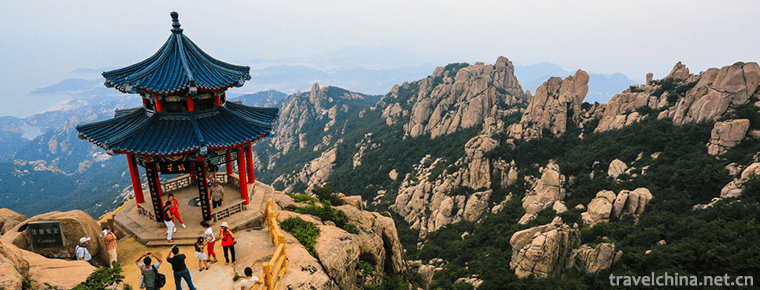
-
Arctic Village Tourism Scenic Area
Arctic Village Tourist Scenic Spot: National AAAAA Class Tourist Spot, the most attractive scenic spot in 2014, and the northernmost scenic spot in China..
Views: 243 Time 2018-12-05 -
Nanshan Cultural Tourism Zone
Nanshan Cultural Tourist Area is located 40 kilometers southwest of Sanya City, Hainan Province. It is the southernmost mountain in China. It belongs to tropical marine monsoon climate. .
Views: 172 Time 2018-12-12 -
Silver Cave
Yinzi karst cave is a typical karst landform, which runs through 12 peaks and belongs to floor-type karst cave. The cave contains stalactites developed in different geological ages.
Views: 128 Time 2019-03-04 -
Hanchuan good books
Hanchuan Shanshu is a kind of traditional folk music which combines rap and singing in Hubei Province. Since the Qianlong period of the Qing Dynasty, it has a history of 260 years. .
Views: 126 Time 2019-05-02 -
Burning Techniques of Linqing Gong Bricks
Linqing fired tribute brick is an ancient handicraft. Beginning in the early Ming Dynasty, Yongle's firing technology is the unique experience accumulated by the working people in Linqing of Shandong .
Views: 94 Time 2019-05-13 -
Lv Jiahe Folk Song
Lvjiahe Folk Song is a kind of folk song which is popular in Lvjiahe Village, Guanshan Town, Danjiangkou City, Hubei Province. Located in Wudang Mountain Scenic Area, the village retains a large numbe.
Views: 198 Time 2019-05-15 -
Tongzhou Bangzi
Tongzhou Bangzi originated in more than ten counties of Dali (Gutongzhou) Center in the east of Guanzhong, Shaanxi Province. Accompanied instruments, besides drum beating, are also named for their str.
Views: 92 Time 2019-06-21 -
Legend of West Lake
The legend of West Lake is one of the local folklores in Hangzhou, Zhejiang Province. It is a national intangible cultural heritage list. Xihu beautiful mountains and rivers, snowflakes and moons, sin.
Views: 129 Time 2019-07-01 -
Xi Opera
Xiju opera, one of the national intangible cultural heritages, is popular along Shanghai and Nanjing, as well as in Hangzhou, Jiahu, Huzhou and urban and rural areas of southern Anhui..
Views: 140 Time 2019-07-01 -
Zhuxian Town Wood Print New Year Picture
Zhuxianzhen Wood Engraving New Year Picture is one of the ancient Chinese traditional crafts. As the originator of Chinese woodcut New Year pictures, is mainly distributed in Kaifeng, Zhuxian Town and.
Views: 133 Time 2019-08-10 -
Guangyuan transportation
Guangyuan has been the transportation hub and material distribution center in the adjacent areas of Sichuan, Shaanxi and Gansu since ancient times. The reconstructed Guangyuan new railway station includes Baoji Chengdu double track railway and .
Views: 79 Time 2020-12-15 -
Neijiang secondary industry
By the end of 2019, there were 329 Industrial Enterprises above Designated Size in Neijiang City, and the added value of industries above designated size increased by 9.5%. The added value of the five traditional pillar industries increased by 9.8%, including.
Views: 332 Time 2020-12-16

